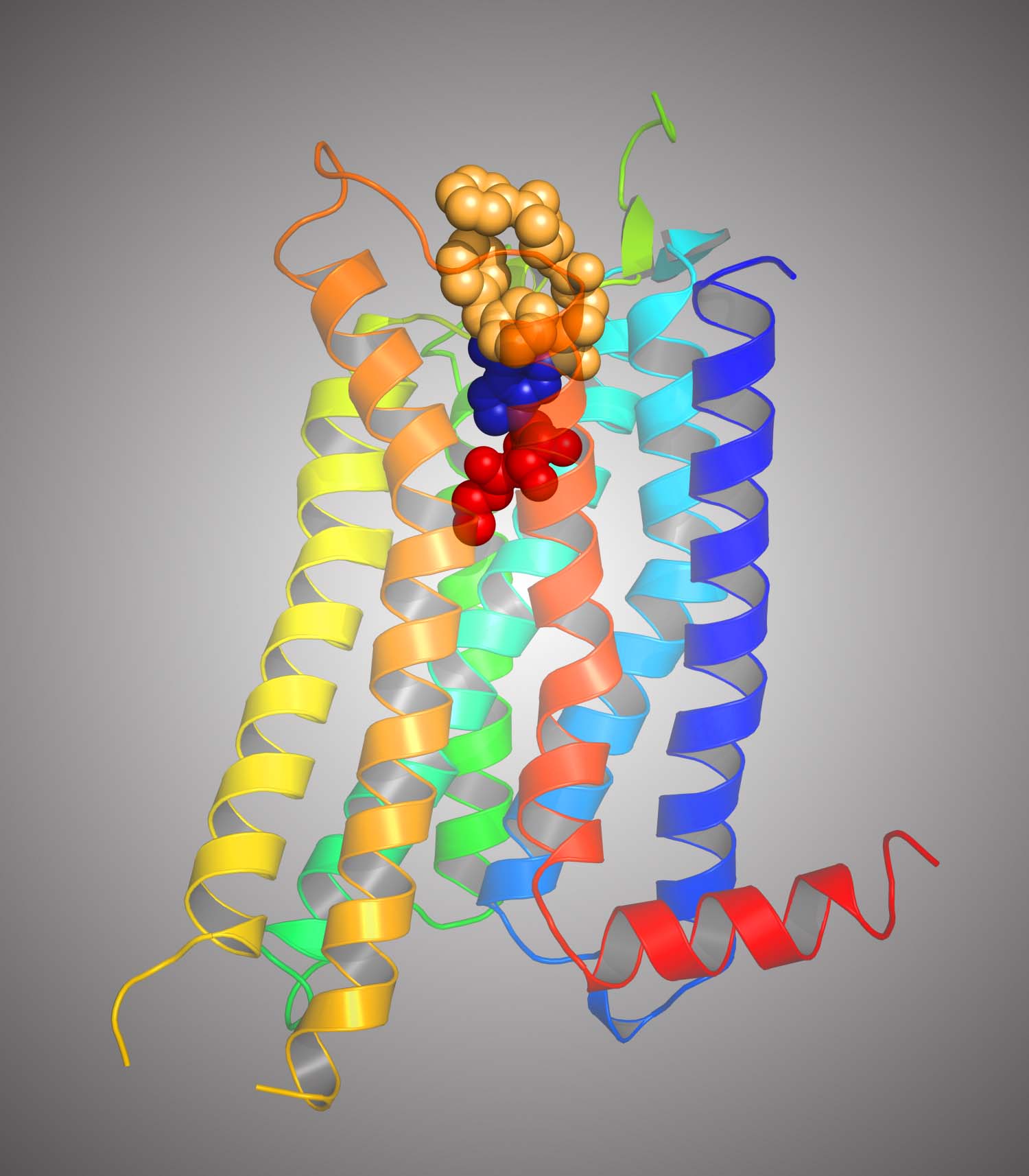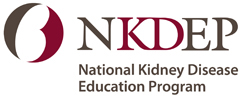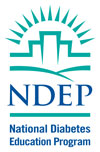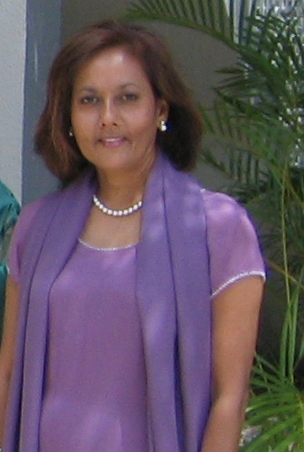Summer 2011 NIDDK Director's Update

In the last few months, the NIH has released strategic plans to combat diabetes and obesity. NIDDK took a leadership role in developing these plans, and has also embarked on the Kidney Research National Dialogue, another plan for targeting the most promising research.
During the strategic planning process, we learn what the scientific and professional communities and the public believe are prime areas of research opportunity, and we evaluate how to build on past advances. Collecting, distilling, and crafting these ideas into a plan takes time and takes strategy itself – but the result is well worth the effort.
Because of the diverse portfolio of diseases in NIDDK’s mission, we create and participate in the development of several plans. However, they all share aspects, like providing training opportunities for emerging scientists, using technology to advance research and building evaluation components into our plans, so we make sure we’re on course to advance the most important health research in the most promising way possible. We use these plans as blueprints rather than mandates – remaining flexible to best harness the potential of future research discoveries.
For example, just as we’ve learned with the Diabetes Prevention Program and are learning with Look AHEAD (Action for Health in Diabetes), behavioral interventions can have lasting, positive effects on health – knowledge we can also apply to obesity research. We’ve also learned that social groups – whom people spend time with – appear to be a predictor of a person’s likelihood of obesity. Now we can confirm and hopefully leverage these findings to consider the role of social ties in approaches to encourage behavior changes that improve health.
In fact, NIH recently issued a funding opportunity announcement to encourage scientists to test the impact of lifestyle interventions in overweight and obese pregnant women on the health of both mother and child, initiatives that build on ideas advanced in the diabetes and obesity plans. These and other efforts help encourage adaptations of evidence-based approaches into effective real-world strategies.
We aim for definitive answers to questions like: Can bariatric surgery cure type 2 diabetes? We also pursue basic research to understand the underlying molecular and genetic pathways of certain diseases, rigorously collecting and tracking progress as we move forward.
Strategic plans work best when they have the wisdom of crowds. When you get a group of diverse thinkers together, they’re often able to come up with a result greater than the sum of its parts. A plan considers actions that should and shouldn’t be taken, both in research and in funding it.
These strategic plans provide us with an opportunity to get diverse and expert input, to look at new scientific opportunities and the technological changes that might enable new research – and then to put these plans into actions that could result in better human health.
Later in this issue of the NIDDK Director’s Update, you can find specifics on the obesity and diabetes strategic plans. I encourage you to read the plans and to consider the contributions you can make to advance public health through research.
In good health,

Dr. Griffin P. Rodgers, M.D., M.A.C.P.
Director, National Institute of Diabetes and Digestive and Kidney Diseases
 TEDDY reaches recruitment target, analysis of data to begin
TEDDY reaches recruitment target, analysis of data to begin
By Rita Zeidner
Tilly Gershbein barely winces these days when staffers at the Pacific Northwest Diabetes Research Institute in Seattle swab the inside of her nose. Accustomed to the procedure, along with being weighed and measured and getting pricked for a blood sample, the curly-haired 4-year-old keeps her eyes on the prize. At the end of her last visit, she scored a new backpack. Before that, a teddy bear.
Perhaps unbeknownst to Tilly, the payoff for tolerating the poking and prodding could be much greater: an eventual vaccine or other preventive treatment for type 1 diabetes.
Tilly is among more than 8,000 youngsters enrolled in one of NIDDK’s most ambitious studies, The Environmental Determinants of Diabetes in the Young Study, or TEDDY (http://t1diabetes.nih.gov/t1d_ctcr/study.asp?StudyID=121). Researchers in the United States, Germany, Sweden, and Finland recently finished recruiting for this trial, and the data they collect from participants could reveal some of the unknowns about who is most likely to develop type 1 diabetes and why.
The fact that Tilly has an aunt who developed type 1 diabetes as a child figured prominently in the decision to enroll in the study, said Emily Gershbein, Tilly’s mother. After a blood test taken at birth showed Tilly was at elevated risk of developing the disease, continuing on with the trial was a no-brainer.
“I've known about diabetes for most of my life, so I was well aware of how it can affect people,” Emily said.
As part of TEDDY, Emily keeps a detailed record of everything Tilly eats for several days each year and regularly submits one of Tilly’s stool samples.
Given her sister’s history of type 1 diabetes, learning Tilly was at risk wasn’t a shock, Emily said. The surprise came when TEDDY researchers discovered Tilly had celiac disease, a digestive disorder that damages the small intestine and interferes with absorption of nutrients from food.
Earlier studies suggest celiac and type 1 diabetes are linked, so it made sense to test TEDDY participants for both, said Dr. Beena Akolkar, the NIDDK geneticist overseeing the study.
Now that the desired number of patients have been enrolled in the study, researchers are poised to begin sifting through data collected thus far. “We will soon be in a position to analyze our samples for biomarkers, toxins, and infectious agents,” said Dr. Judith Fradkin, director of NIDDK’s Division of Diabetes, Endocrinology, and Metabolic Diseases.
For Emily Gershbein, enrolling in TEDDY has already proved worthwhile.
“No one wants this kind of news,” Emily said of Tilly’s diagnosis. “But if your daughter has a disease like celiac, it’s best to learn about it early, so you can keep her away from foods that can do damage. The diagnosis was a benefit of TEDDY we never expected.”

Researchers at NIH and Uniformed Services University of Health Sciences have zoomed in on mouse chromosomes to map hotspots of genetic recombination — sites where DNA breaks and reforms to shuffle genes. The findings have the potential to improve the detection of genes linked to disease and to help understand the root causes of genetic abnormalities. The research, published online April 3 in Nature, moves scientists one step closer to understanding how mammals evolve and respond to their environments.
www.nih.gov/news/health/apr2011/niddk-05.htm
For the first time, researchers have found five regions in the human genome that increase susceptibility to immunoglobulin A (IgA) nephropathy, a major cause of kidney failure worldwide — systematically identifying those that point to a tendency for IgA nephropathy, or a protection against it. The ongoing genome-wide association study is funded by the NIH’s Office of the Director, NIDDK, and National Center for Research Resources, under an NIH Challenge Grant. The project is a part of the $10.4 billion provided to NIH through the Recovery Act. Results were published in the April issue of Nature Genetics.
www.nih.gov/news/health/apr2011/niddk-04.htm
 Researchers have solved the three-dimensional structure of a key biological receptor. The finding has the potential to speed drug discovery in many areas, from arthritis to respiratory disorders to wound healing, because it enables chemists to better examine and design molecules for use in experimental drugs. The researchers are from the NIH, collaborating with labs at The Scripps Research Institute and the University of California, San Diego. The finding is published in the March 10 edition of Science Express.
Researchers have solved the three-dimensional structure of a key biological receptor. The finding has the potential to speed drug discovery in many areas, from arthritis to respiratory disorders to wound healing, because it enables chemists to better examine and design molecules for use in experimental drugs. The researchers are from the NIH, collaborating with labs at The Scripps Research Institute and the University of California, San Diego. The finding is published in the March 10 edition of Science Express.
www.nih.gov/news/health/mar2011/niddk-14.htm
In this representation, the newly determined structure of the A2A receptor for adenosine is shown surrounding its synthetic agonist, a molecule that turns on the receptor. The spiral shapes and the slim connecting loops represent the receptor protein, winding back and forth through the cell membrane. The central (red) part of the agonist is critical for activation of the receptor. The top (tan-colored) part of the agonist, facing the outside of the cell, acts like arms to fill much of the remaining space in the binding site and stabilize the receptor, in order to obtain a crystallized structure. Source: Francesca Deflorian, Ph.D., NIDDK, NIH

 NKDEP’s National Kidney Month campaign encourages African-Americans to learn about kidney health
NKDEP’s National Kidney Month campaign encourages African-Americans to learn about kidney health
In observance of National Kidney Month in March, the National Kidney Disease Education Program (NKDEP) – an NIH initiative – led a national media, grassroots, and online campaign to encourage African-Americans to better understand kidney health. African-Americans are at highest risk to develop kidney failure among U.S. racial and ethnic groups.
National Kidney Month activities included:
• Seven radio interviews, including two national placements, featuring Dr. Griffin P. Rodgers. He was interviewed on March 22, National Diabetes Alert Day, and emphasized the connection that diabetes plays in the risk for kidney disease. As well, online media including leading black online health outlets UrbanHousecall.com and JourneytoWellness.com ran articles related to National Kidney Month.
• An interactive Q&A with BlackDoctor.org on Facebook. Participants from across the nation posted 24 questions about kidney health on Facebook during the week of March 7. NKDEP posted replies on World Kidney Day, March 10. Facebook and YouTube were also used to promote Kidney Month activities and education.
• Materials distribution at several events, including family reunion planner events in Birmingham, Detroit, Dallas, and Atlanta, as part of NKDEP’s Family Reunion Initiative, which encourages African-American families to discuss their health history particularly as it relates to kidney health.
• Four faith organizations conducted Kidney Sundays events in North Carolina, Maryland, and Virginia. NKDEP’s Kidney Sundays program provides educational materials to faith communities to discuss kidney health.
An NIH news release about World Kidney Day and National Kidney Month is available at www.nih.gov/news/health/mar2011/niddk-10.htm. To learn more about NKDEP, visit www.nkdep.nih.gov.
It’s never too early to prevent diabetes: NDEP educates on the lasting impact of gestational diabetes
 The National Diabetes Education Program (NDEP) – an initiative of NIH and the Centers for Disease Control and Prevention – recently teamed up with the National Healthy Mothers, Healthy Babies Coalition (HMHB) to disseminate diabetes prevention messages about the lasting impact of gestational diabetes on mothers and children through HMHB’s “Interview with Experts” Q&A Series, as well as its Maternal and Child Health Webinar Series.
The National Diabetes Education Program (NDEP) – an initiative of NIH and the Centers for Disease Control and Prevention – recently teamed up with the National Healthy Mothers, Healthy Babies Coalition (HMHB) to disseminate diabetes prevention messages about the lasting impact of gestational diabetes on mothers and children through HMHB’s “Interview with Experts” Q&A Series, as well as its Maternal and Child Health Webinar Series.
The “Interview with Experts” Q&A featured Dr. Judith Fradkin, director of NIDDK’s Division of Diabetes, Endocrinology, and Metabolic Diseases, and can be viewed at www.hmhb.org/gestational_diabetes_interview.html . The webinar on lifelong risks of gestational diabetes featured NDEP Director Joanne Gallivan, M.S., R.D., and Dr. Robert Ratner, vice president for scientific affairs at Medstar Research Institute and a principal investigator for the Diabetes Prevention Program (DPP) and DPP Outcomes Study of the NIH. The webinar can be heard at www.hmhb.org/mchwebinar.html
. The webinar on lifelong risks of gestational diabetes featured NDEP Director Joanne Gallivan, M.S., R.D., and Dr. Robert Ratner, vice president for scientific affairs at Medstar Research Institute and a principal investigator for the Diabetes Prevention Program (DPP) and DPP Outcomes Study of the NIH. The webinar can be heard at www.hmhb.org/mchwebinar.html .
.
Both venues provided an opportunity to reach health care providers, community groups, and individuals with information about the lifelong health risks for women with a history of gestational diabetes, the potential risks to the child of the pregnancy complicated by gestational diabetes, and the steps mothers can take to help lower these risks for both themselves and their children.
To find NDEP resources to teach healthy habits that can lower lifetime risk of diabetes after gestational diabetes, visit www.YourDiabetesInfo.org/gdm
New strategic plan for NIH obesity research seeks to curb epidemic
The NIH released its second Strategic Plan for NIH Obesity Research on March 31. Developed by the NIH Obesity Research Task Force, on which NIDDK plays a leadership role, the plan recognizes that eating less and exercising more is easier said than done. Highlighting the crucial role of research in efforts to reduce obesity, the plan – which had input from internal and external researchers, health care professionals, and the public during its creation – emphasizes moving science from laboratory to clinical trials to practical solutions, and is designed to help target efforts and resources in areas most likely to help.
"Obesity has many causes and contributing factors. This plan is a bold blueprint that will encourage the research community to examine the epidemic of obesity from diverse perspectives," said NIH Director Dr. Francis S. Collins. "Through the scientific opportunities outlined in the strategic plan, researchers can work together toward the goals of preventing and treating obesity, to help people lead healthier and more fulfilling lives."
Learn more about obesity research at NIH, see a video about the plan featuring Dr. Collins, and view or request a free copy of the summary or complete Strategic Plan for NIH Obesity Research at www.obesityresearch.nih.gov.
Diabetes research strategic plan now available
 Advances and Emerging Opportunities in Diabetes Research: A Strategic Planning Report of the Diabetes Mellitus Interagency Committee, which was released in February, is now available electronically on the NIDDK Web site at http://diabetesplan.niddk.nih.gov. NIH highlighted the publication of the strategic plan in a March 18 press release (www.nih.gov/news/health/mar2011/niddk-18.htm).
Advances and Emerging Opportunities in Diabetes Research: A Strategic Planning Report of the Diabetes Mellitus Interagency Committee, which was released in February, is now available electronically on the NIDDK Web site at http://diabetesplan.niddk.nih.gov. NIH highlighted the publication of the strategic plan in a March 18 press release (www.nih.gov/news/health/mar2011/niddk-18.htm).
The strategic plan identifies an array of research opportunities with the greatest potential to benefit the millions of Americans who are living with or at risk for diabetes and its complications. To order a print copy, see instructions on the strategic plan Web site listed above.
Funding Opportunities: www2.niddk.nih.gov/Funding/FundingOpportunities/
Grants and Contract Notices: www2.niddk.nih.gov/Funding/FundingOpportunities/Notices

Congratulations to …
 |
LaVarne Burton, an NIDDK Advisory Council member, who has been named to the board of directors of the National Health Council, an organization made up of more than 100 national health-related groups. She will serve as vice chairman. Burton is president and chief executive officer of the American Kidney Fund. |
Welcome to ...
 |
Dr. Padma Maruvada, who joins as the new Director of Nutrition and Clinical Obesity Program in NIDDK’s Division of Digestive Diseases and Nutrition. Previously she served as the program officer in National Center for Research Resources (NCRR), for the Institutional Development Awards Program (IDeA), where she managed a multidisciplinary research portfolio. She also served as the Program Director in NCI Division of Cancer Prevention and earlier she trained in the NIDDK’s intramural research program. |
A fond farewell to …
 |
Dr. Elizabeth (Lucy) Greene, executive officer of NIDDK, who will retire in May after 35 years of government service. |
 |
Dr. Brian Monahan, rear admiral in the U.S. Navy, who has served on the NIDDK Advisory Council since 2005 as ex-officio member representing the Department of Defense. Monahan is the attending physician of the U.S. Congress and the U.S. Supreme Court. |
In memoriam
 |
Dr. Vanessa Z. Ameen, a senior scientific advisor within NIDDK’s Division of Digestive Diseases and Nutrition, died in February 2011. Specializing in pediatrics and gastroenterology, Ameen was recruited to NIH from private industry, where she had been medical director to several pharmaceutical manufacturers. She had also been an assistant professor of pediatrics at Temple University and taught at Indiana University and the Medical College of Wisconsin. Dr. Ameen was science officer for the Patient-Reported Outcomes Measurement Information System (PROMIS), a network of NIH-funded facilities working to develop better measures for patient symptom-based outcomes. |
The next edition of the Director’s Update will be online at www.directorsupdate.niddk.nih.gov in September.
Submission information: To submit an item for the next Update, please contact Editor Amy F. Reiter at reiteraf@niddk.nih.gov. Items must be submitted seven weeks before the month of publication to be considered for the next issue.
Subscription information: The NIDDK Director’s Update is published in September, December, March, and May. To subscribe to the Update, go to www.directorsupdate.niddk.nih.gov. The subscription box is near the top right of the page.
Page last updated: May 10, 2011